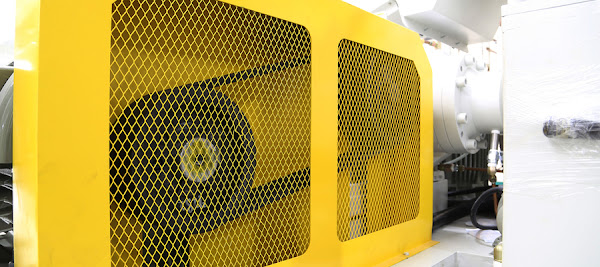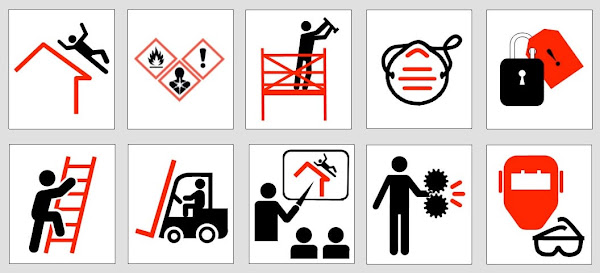Machine guarding accidents can and often cause serious, life-altering injuries such as amputation, paralysis, serious burn injuries, spinal cord injuries or traumatic brain injuries (TBIs). In some cases, unfortunately, such accidents can also be fatal.
Our Personal Injury Lawyers have extensive experience handling cases involving:- Improperly guarded machines (Failure to put guards, removing guards)
- Lockout/Tag-out Violations
- Lack of two hand buttons or infra-red type stop limiter
- Lack of guardrails or machine guides on presses, saws, conveyor belts and other industrial equipment
- Construction vehicles such as cranes, bulldozers, forklifts and skid loads
- Defective elevator or lift mechanisms
- Faulty electrical wiring
Our Work Injury Attorneys recovered $3,650,000 on behalf of our client who suffered an amputated hand in a 220-volt Horizontal Food Mixer accident which could have been prevented with the appropriate machine guarding or lock-out emergency shut-off-switch required by OSHA.
COMMON INDUSTRIAL INJURIES
Industrial machinery accidents could cause injuries that last a lifetime. Affected workers may suffer permanent scarring, disfigurement, or physical or cognitive disabilities. They may never be able to return to their jobs. They may not survive at all. Common injuries include:
- Traumatic amputations
- Crushed bones
- Head and brain injuries
- Spinal cord injuries
- Chemical, electrical, and thermal burns
- Electrocution
- Explosion-related eye or ear injuries
- Severe lacerations
- Wrongful death
AMPUTATION INJURIES
Amputation is one of the most severe types of injuries in the occupational workplace, and often results in permanent disability. An amputation injury impacts your ability to work, and perform daily functions, permanently. You could lose hundreds of thousands of dollars in potential earnings over your lifetime, on top of medical bills and disability expenses. These financial losses combined with the severe pain and emotional suffering of losing a limb, and then you have a personal injury claim. Our personal injury lawyers can help you maximize your financial recovery for an amputation injury.
The Occupational Safety and Health Administration (OSHA) find that amputations at work occur most often around unguarded or inadequately safeguarded machines. Conveyors, power presses, printing presses, rolling machines, food mixing machines, food slicers, drill presses, meat-cutting saws, meat grinders, trash compactors, forklifts, and shears could all cause traumatic amputations. Amputations may occur while using, cleaning, adjusting, or maintaining these machines.
WHAT IS MACHINE GUARDING
Machine guards are barriers that protect against hazards from all sources, including access prevention to danger areas. The danger area is the machine’s point of operation area from which the operator must stay clear during the machine’s operation cycle to prevent serious injury.
Many industrial and construction jobs require the use of machines, and some parts of these machines and areas around them may be especially dangerous to operators. Most industrial machines require safety guards, and missing safety guards can easily lead to severe or fatal injuries.
Employee exposure to unguarded or inadequately guarded machines is prevalent in many workplaces. Workers who operate and maintain machinery suffer approximately 18,000 amputations, lacerations, crushing injuries, abrasions, and over 800 deaths per year.
A study released by The Bureau of Labor Statistics (BLS) regarding injuries in the workplace found over 34,000 people sustain a lost-time injury in the workplace annually due to industrial machine accidents. Additionally, the Occupational Safety & Health Association (OSHA) named the lack of machine safeguarding “Top Ten List” of frequently cited employee safety violations of 2019, with 1,743 violations issued.
OSHA regulations For Machine Guarding
While industrial machines play a critical role in the production process and allow employees to work with less effort, they are inherently dangerous. From grinders and drill presses, to milling machines and sanders, industrial machines are designed to operate at high speeds and pressures to cut, shred, bend, punch and crush metal. Without safeguarding in place, any physical contact with a machine’s moving parts can result in severe injuries and possibly death.
OSHA MACHINE GUARDING REGULATIONS1910.219(a)
One or more methods of machine guarding shall be provided to protect the operator and other employees in the machine area from hazards such as those created by point of operation, ingoing nip points, rotating parts, flying chips and sparks. Examples of guarding methods are--barrier guards, two-hand tripping devices, electronic safety devices, etc.
1910.219(b)Flywheels located so that any part is seven (7) feet or less above floor or platform shall be guarded. For flywheels with smooth rims five (5) feet or less in diameter, where the preceding methods cannot be applied, the following may be used: A disk attached to the flywheel in such manner as to cover the spokes of the wheel on the exposed side and present a smooth surface and edge, at the same time providing means for periodic inspection. Cranks and connecting rods, when exposed to contact, shall be guarded.
1910.219(c)Shafting under bench machines shall be enclosed by a stationary casing, or by a trough at sides and top or sides and bottom, as location requires. The sides of the trough shall come within at least six (6) inches of the underside of table, or if shafting is located near floor within six (6) inches of floor. In every case the sides of trough shall extend at least two (2) inches beyond the shafting or protuberance.
Vertical and inclined shafting seven (7) feet or less from floor or working platform, excepting maintenance runways, shall be enclosed with a stationary casing.
Pulleys, any parts of which are seven (7) feet or less from the floor or working platform, shall be guarded in accordance with the standards specified in paragraphs (m) and (o) of this section. Pulleys serving as balance wheels (e.g., punch presses) on which the point of contact between belt and pulley is more than six feet six inches (6 ft. 6 in.) from the floor or platform may be guarded with a disk covering the spokes.
1910.263(e)Mixers with external power application shall have all belts, chains, gears, pulleys, sprockets, clutches, and other moving parts completely enclosed.
Each mixer shall be equipped with an individual motor and control, and with a conveniently located manual switch to prevent the mixer from being started in the usual manner while the machine is being serviced and cleaned.
INDUSTRIAL ACCIDENTS
An industrial accident occurs in a workplace within an industry that depends on heavy machinery and related processes. Industrial accidents can arise due to defective or malfunctioning equipment, poorly maintained machinery, or lack of proper employee training. Any incident that results in employee injury or death may constitute an industrial accident. Industrial accidents are often not accidents at all. They are preventable tragedies that arise because of someone else’s negligence.
TYPES OF INDUSTRIAL ACCIDENTS
- Heavy equipment accident
- Caught-in/between
- Forklift accident
- Transportation accident
- Chemical burns
- Explosions
- Crane accidents
- Commercial fires
- Electrocution
CAUSES OF INDUSTRIAL ACCIDENTS
Recognizing the causes of your recent industrial machinery accident is the first step toward obtaining fair compensation for your damages.
- Poor equipment maintenance: Poor machinery or property maintenance could lead to safety hazards such as inaccessible or faulty shutoff switches (Lock-Out/Tag-Out), obstructed lines of sight, missing machine safety guards, or another non-compliance with OSHA. It is every employer’s legal duty to properly inspect, repair, and maintain all equipment and machinery at the worksite. All business owners must ensure their premises are safe and functional for employees, customers, and partners who use the premises
- Failure to train or supervise: It is the employer’s duty to properly train all industrial workers to safely and efficiently operate heavy machinery. Lack of training could make it impossible for an employee to know how to avoid a deadly situation. Lack of proper supervision from a manager could also contribute to worker injuries or deaths. Every employer has the legal duty to prepare workers for the jobs they will perform. If a worker’s job involves industrial machinery, the employer must properly train the worker on how to use it according to the manufacturer’s instruction manual. This includes teaching workers all related safety tips, and providing warnings of potential threats to health or safety.
- Careless employers: OSHA has many rules regarding how to control the potential hazards involved with machinery, machine guarding, falls, power tools, transportation, hazardous energy, and more. Employers in industrial industries must know and obey OSHA’s related safety guidelines. Failure to adhere to OSHA’s rules could create an unnecessarily dangerous work environment for employees
- Equipment defects: Sometimes an employer does everything possible to prepare workers and maintain equipment, but serious injuries happen anyway. These instances may involve a defective piece of machinery. Design, manufacturing, or marketing defects could make industrial machinery impossible to use without unreasonable risk of harm. Product manufacturers have a legal obligation to make sure the products they develop and sell do not pose risks or safety hazards to end users. When a defective product causes an injury, death, and/or property damage, the victims may have grounds for a product liability claim against the manufacturer
WHO IS RESPONSIBLE (LIABLE)?
Liability refers to someone’s legal responsibility for another person’s injuries and related damages. One person may be liable for an industrial machinery accident if he or she individually contributed to the tragedy through an act of negligence or intent to harm. Otherwise, a company or another entity may bear responsibility.
Miller Weisbrod’s Personal Injury Lawyers work quickly to identify all liable parties, from employers who neglected to monitor and secure a safe work environment to independent employees who failed to follow safety standards to manufacturers of defective products that were rushed to market without proper safety features or flawed functionality that causes serious injury or, even in the worst cases, death.
CONTACT MILLER WEISBROD WORK INJURY ATTORNEYS
The Dallas Work Injury Lawyers of Miller Weisbrod offer informed counsel and experienced representation to clients in Texas and nationwide. To discuss your case in a free initial consultation with an experienced lawyer, please fill out the contact form on this page to schedule an appointment. You can also call us directly at 214-987-0005 or toll free at 888-987-0005.




















